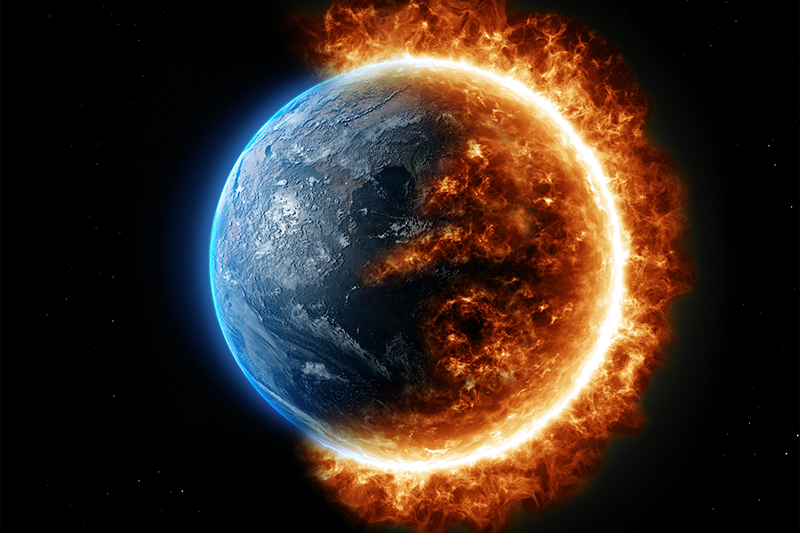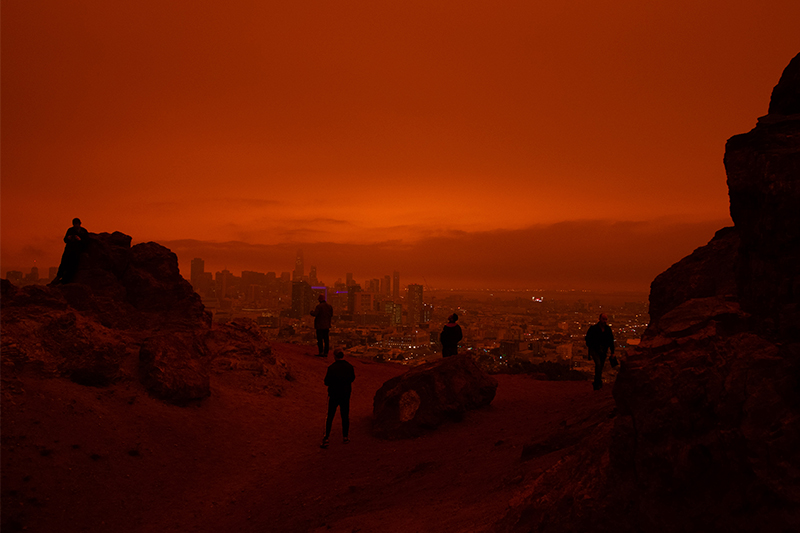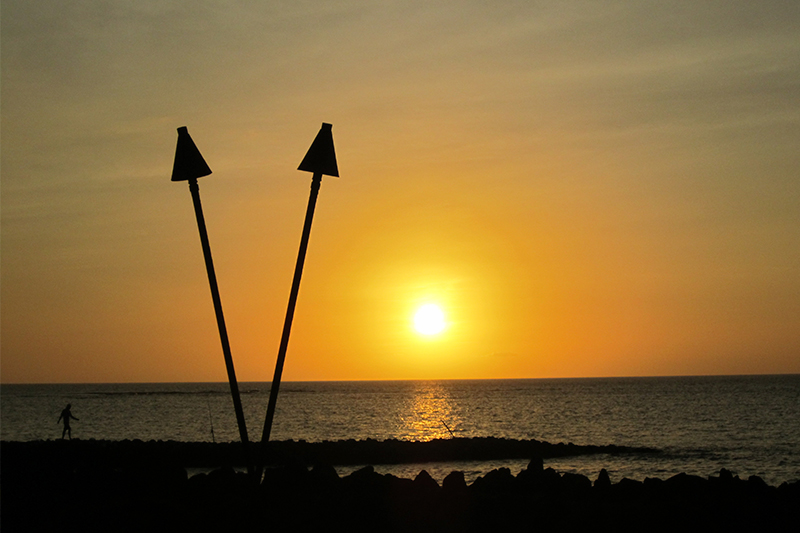
Wildfire Events Are Increasingly Impactful
Wildfire events are on the rise. These disasters are increasingly devastating due to various factors, including changing climate patterns, prolonged droughts, and human activities. Rising global temperatures contribute to drier conditions and extended fire seasons. This enables fires to ignite and spread more readily. Urban sprawl and development in fire-prone areas also raise the likelihood of ignition sources. Additionally, inadequate forest management practices and the accumulation of dead vegetation create an explosive environment. These compounding factors amplify wildfires’ scale, intensity, and frequency, resulting in catastrophic impacts on ecosystems, communities, and economies, necessitating enhanced preparedness, response, and mitigation strategies to address the growing threat.
The Maui wildfires, a recent destructive event in Maui, Hawaii, encompassed rapidly spreading fires that significantly threatened natural landscapes and populated areas. Driven by dry conditions, strong winds, and challenging terrain, the fires led to the evacuation of residents, the destruction of vegetation and wildlife habitats, and efforts by firefighting teams to contain and mitigate their impact. The event highlighted the urgency of addressing the growing risk of wildfires exacerbated by extreme climate conditions while showcasing the resilience and dedication of emergency responders and the local community in confronting these difficult circumstances.

Wildfire Risk
Wildfires can be devastating due to their rapid spread, intense heat, and the potential to destroy natural ecosystems and human structures. They can lead to loss of life, property damage, displacement of residents, destruction of wildlife habitats, and environmental degradation. The impact of a wildfire event depends on various factors, including weather conditions, the size of the fire, the speed of containment efforts, and the vulnerability of the affected area.
The risk of wildfire disasters poses a significant threat to companies and communities, encompassing economic, environmental, and social dimensions. For companies, wildfires can lead to disruptions in operations, damage to infrastructure, supply chain interruptions, and financial losses. The destruction of natural resources can impact industries like agriculture, forestry, and tourism. Communities face the potential loss of homes, public infrastructure, critical services, and adverse health effects due to smoke and air quality issues. Evacuations and property damage strain local resources, while the long-term impact of reduced property values can affect community stability. Effective wildfire preparedness, mitigation, and collaboration between companies and communities are crucial to minimizing the far-reaching consequences of these disasters.

Confluence Compounds Disaster Impacts
“Confluence” in the context of disasters typically refers to the coming together or convergence of various factors, events, or circumstances that amplify the impact or severity of a disaster. It represents the intersection of multiple elements that, when combined, lead to a more significant and complex disaster scenario. For example, a confluence of factors in a natural disaster like a hurricane could include a high tide, heavy rainfall, and strong winds co-occurring. This convergence could result in widespread flooding, storm surge, and infrastructure damage, making the disaster more severe than if these elements occurred separately.
In a broader sense, “confluence” also encompasses the interactions of different types of disasters, such as a natural disaster coinciding with a technological failure or a public health crisis. The term highlights how the simultaneous occurrence of multiple events can create unique challenges that require integrated and multifaceted responses from emergency management and disaster response teams. The fire event in Maui is devastating and is an example of this–multiple issues converging to devastate lives, communities, and businesses.

The Devastation Of Lahaina
Of course, time will provide increased insight into the causes of the blazing inferno that engulfed Lahaina. Reporting indicates that winds of 81 mph contributed to the deaths and caused over 5 billion in estimated damages. For now, the rescue continues. Recovery will likely be a long process for the historic community. Already, we are seeing indications of people’s resilience as they work to provide aid. Recovery and resilience are challenging, but Hawaiians are adaptable. We wish them well in the difficult days ahead.
Understanding confluence is crucial for disaster preparedness and response efforts, as it requires anticipating and planning for the interplay of various factors that could exacerbate the impact of a disaster. It underscores the need for comprehensive risk assessments and effective coordination among various stakeholders to address the complexities that arise when multiple factors converge during a crisis. Along with understanding that various factors can come together to cause the negative impacts of an event, polycrisis is also something we need to be planning for.

How To Build Wildfire Event Resilience
A resilient company can proactively prepare for wildfire events by implementing a comprehensive strategy encompassing various risk management aspects. First and foremost, conducting a thorough risk assessment to identify vulnerabilities related to wildfire exposure is crucial. This includes evaluating the physical location of facilities, assessing the surrounding vegetation and fire-prone zones, and identifying critical infrastructure that could be impacted. The company can develop tailored evacuation plans, establish communication protocols, and train employees on wildfire safety measures with this knowledge. Collaborating with local emergency agencies and fire departments to integrate into broader community response efforts is also essential.
In terms of infrastructure, companies can invest in fire-resistant construction materials, establish defensible perimeters around their facilities by clearing combustible vegetation, and ensure that firefighting equipment is readily available and functional. Developing a robust business continuity plan outlining operations procedures, supply chain management, and customer communication during and after a wildfire is critical. Moreover, forging partnerships with suppliers and customers to maintain resilience across the entire value chain is essential, as disruptions to one entity can have cascading effects. Regularly testing these plans through simulations and tabletop exercises and staying informed about local fire conditions through monitoring systems ensures that the company is well-prepared to respond effectively and recover swiftly in the face of a wildfire disaster.

Rebuilding After The Fire
After the Maui wildfire event, residents and businesses need to take immediate and calculated actions to ensure safety and facilitate recovery. Residents should prioritize their safety by following instructions from local authorities. Returning to areas affected by the fire should only occur once officials declare it safe. Residents should assess their homes for damage, secure vulnerable sites, and be cautious of potential hazards like weakened structures or toxic residue. Additionally, staying informed about air quality and health advisories due to smoke is crucial for personal well-being.
For businesses, post-wildfire recovery requires a multi-faceted approach. Companies should assess the impact of the wildfire on their facilities, infrastructure, and supply chain. Collaborating with local emergency management agencies can provide insights into the extent of damage and available resources. It’s essential to communicate with employees, customers, and suppliers about the situation and any disruptions to operations. Companies should also work closely with insurance providers to initiate claims promptly. Engaging in community support efforts, such as providing aid to affected residents or participating in post-disaster clean-up initiatives, helps strengthen the broader recovery process. By prioritizing safety, clear communication, and coordinated efforts, both residents and businesses in Maui can work together to navigate the aftermath of the wildfire event and rebuild more robust and resilient communities.
Calling all Resilience Warriors!
Don’t miss a beat with Disaster Empire – your gateway to groundbreaking insights and exclusive content!
Get ahead of the game by signing up NOW! Be an insider and be the FIRST to access our power-packed blog posts every Tuesday!
Unleash a world of knowledge with each blog – we’ve got it all! From embedded links to source materials, captivating articles, eye-opening videos, must-read books, and top-notch training, we’ve got your back! Just click on a blue link to dive into an ocean of valuable resources!
Take resilience to new heights with our captivating podcast! Featuring exclusive interviews with thought leaders and innovators, this is YOUR ticket to inspiration and progress! Available on YouTube and YouTube Music for your ultimate viewing and listening pleasure!
Don’t wait! The excitement starts every Tuesday with our blog posts, and we’re not done yet – every Thursday, a fresh, invigorating podcast awaits you!
Join our growing community of change-makers and conquer challenges with Disaster Empire! Together, we’ll shape a resilient future!
